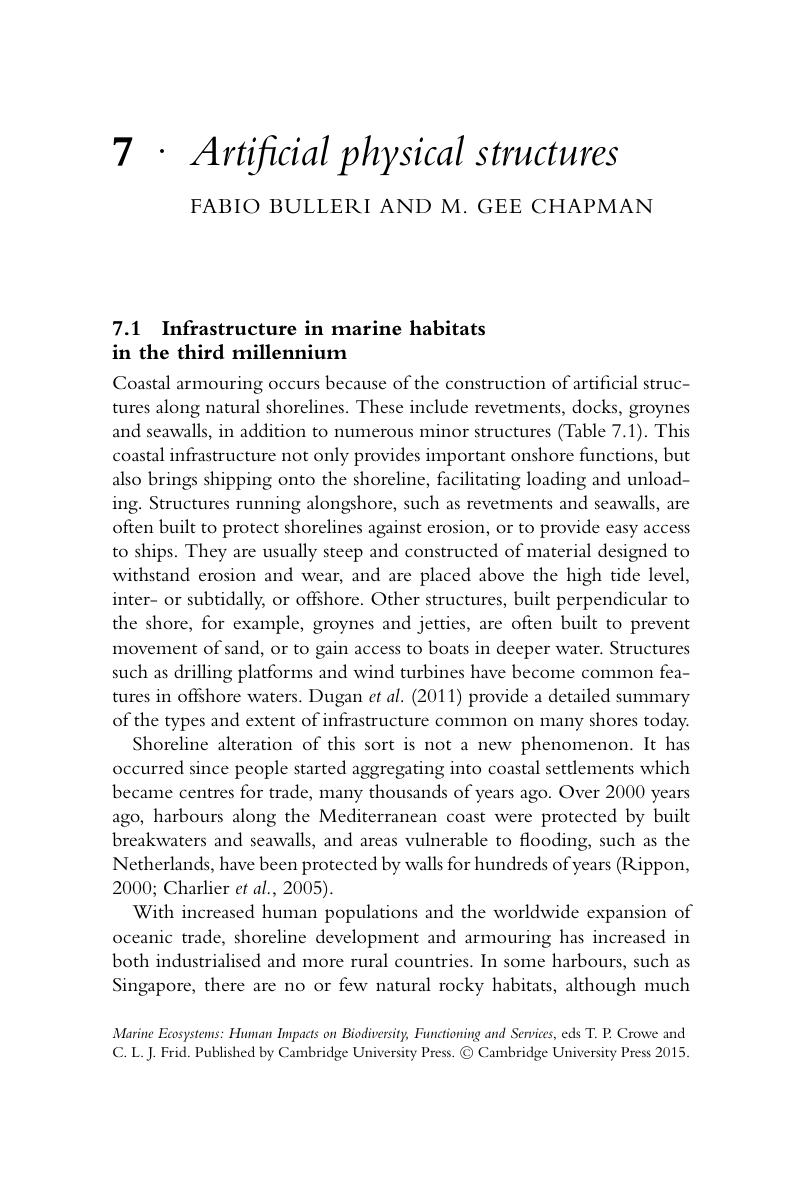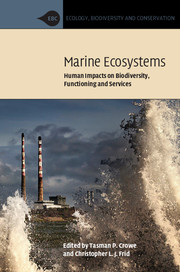Book contents
- Frontmatter
- Contents
- List of contributors
- Part I Key concepts
- Part II Impacts of human activities and pressures
- 6 Marine fisheries and aquaculture
- 7 Artificial physical structures
- 8 Eutrophication and hypoxia: impacts of nutrient and organic enrichment
- 9 Pollution: effects of chemical contaminants and debris
- 10 Invasions by non-indigenous species
- Part III Synthesis and conclusions
- Index
- Plate Section
- References
7 - Artificial physical structures
from Part II - Impacts of human activities and pressures
Published online by Cambridge University Press: 05 June 2015
- Frontmatter
- Contents
- List of contributors
- Part I Key concepts
- Part II Impacts of human activities and pressures
- 6 Marine fisheries and aquaculture
- 7 Artificial physical structures
- 8 Eutrophication and hypoxia: impacts of nutrient and organic enrichment
- 9 Pollution: effects of chemical contaminants and debris
- 10 Invasions by non-indigenous species
- Part III Synthesis and conclusions
- Index
- Plate Section
- References
Summary

- Type
- Chapter
- Information
- Marine EcosystemsHuman Impacts on Biodiversity, Functioning and Services, pp. 167 - 201Publisher: Cambridge University PressPrint publication year: 2015
References
- 7
- Cited by



